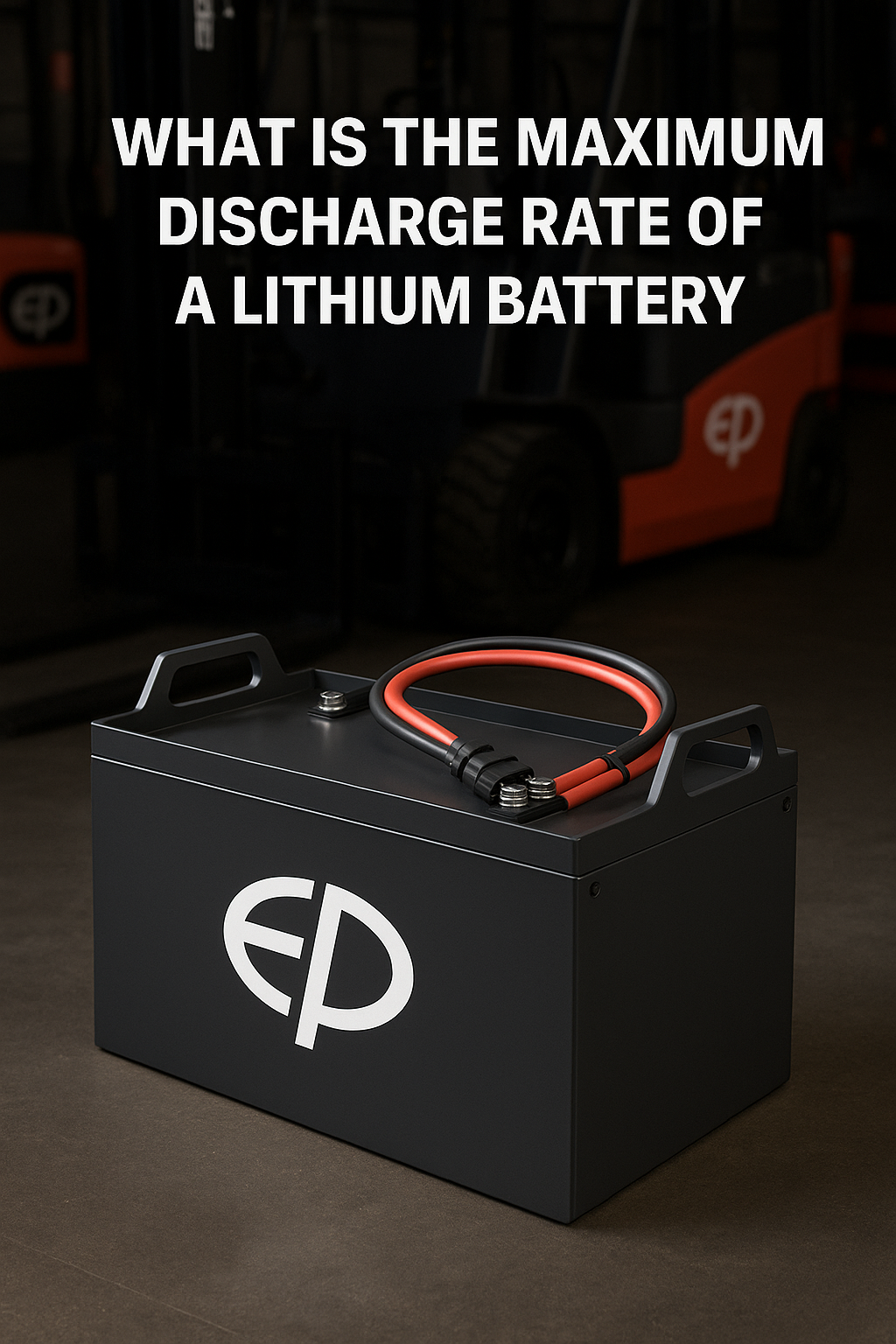Understanding the Maximum Discharge Rate of Lithium Batteries – Why It Matters for Forklifts
Understanding the Maximum Discharge Rate of Lithium Batteries – Why It Matters for Forklifts
-
What is the Maximum Discharge Rate?
The maximum discharge rate is the highest current a battery can safely deliver to a device (e.g., a forklift) over a certain period while maintaining performance and safety.
This specification is denoted by the standard C-rate. -
Simple Explanation of C-rate
| Battery Capacity (Ah) | 1C Discharge | 2C Discharge | 3C Discharge |
|---|---|---|---|
| 100Ah | 100A | 200A | 300A |
| 200Ah | 200A | 400A | 600A |
➡️ The higher the C-rate, the stronger the discharge – ideal for heavy loads, acceleration, or continuous operation.
-
Why Do Forklifts Need High Discharge Batteries?
Forklifts lift heavy goods and operate continuously in warehouses.
If the discharge rate is low:
-
The vehicle may feel underpowered
-
Risk of sudden shutdown or instability
If the discharge rate is high enough:
-
Handles heavy loads effectively
-
Smooth, stable operation
-
Longer lifespan for the motor and electrical system
-
Discharge Rate of EP Forklift Lithium Batteries
Depending on the model, maximum discharge can range from 1C to 3C or higher, depending on load requirements.
Example: 205Ah lithium battery (EP electric forklift)
-
1C = 205A
-
2C = 410A
-
3C = 615A
➡️ Ensures peak performance while maintaining safety and energy efficiency.
-
✅ Benefits of High Discharge Batteries
-
Stable performance under heavy load
-
No voltage drops or interruptions during shifts
-
Extended equipment lifespan
-
Fast charging – long runtime
-
📌 Usage Notes
-
Avoid continuous discharge at maximum rate
-
Choose a battery that matches the forklift’s power needs
-
Ensure the BMS protects against overcurrent, overheating, and overload



